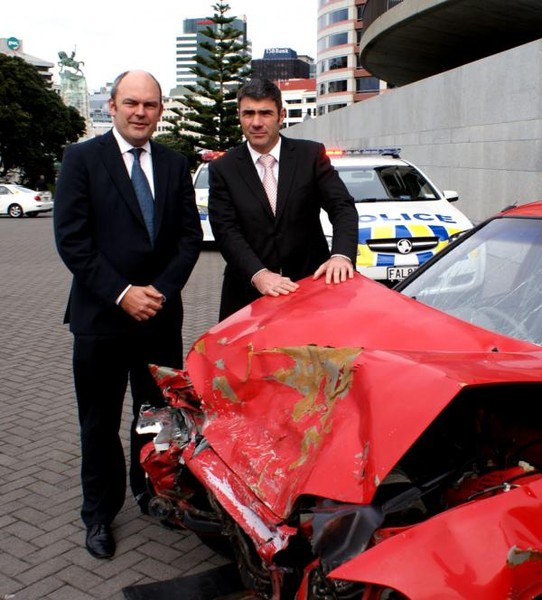Government seeks views on road safety

Transport Minister Steven Joyce today launched a discussion document containing possible government actions that could help to make New Zealand’s roads safer.
He says the feedback received from road users will be used to develop a national road safety strategy for the next ten years. This strategy will be released in December.
“The roading system belongs to road users so I am urging everyone with an interest to have their say, and be part of efforts to improve road safety.”
The Safer Journeys discussion document invites views on proposed high priority areas for improving road safety:
- Alcohol and drug impaired drivers
- Safer speeds
- Young drivers
- Motorcycling
- Roads and roadsides
The document also lists a number of medium level priorities, including improving the safety of the light vehicle fleet, safer walking and cycling, further improving the safety of heavy vehicles, and reducing the impact of fatigue and distraction.
Mr Joyce says these areas were chosen as priorities because they are problem areas where real gains can be made.
“In recent years, there have been some major gains in road safety – the road toll has more than halved since its peak in 1973, while at the same time kilometres travelled have more than doubled.
“But despite these gains, hundreds of New Zealanders are killed and thousands injured on our roads every year, mostly in preventable crashes. Safer Journeys is a step towards improving the safety of our roads.
“Our road toll does not compare favourably with the countries we like to compare ourselves with. We have considerably more deaths per head of population than Australia and Ireland, and twice that of the United Kingdom.
“As well as the impact on families and communities, the social cost of road crashes is estimated to be $3.8 billion dollars a year.
“While the document outlines more than 60 initiatives, it is not my intention to introduce anywhere near that many changes. The purpose of this review is to have a public debate about which are the most likely to make an impact and the most necessary to adopt,” says Mr Joyce.
Public consultation is open until 2 October. Initial actions will be implemented over the next year or two.
A full copy of the discussion document, as well as a summary guide and submission form is available on www.saferjourneys.govt.nz.
- The impact of high priority road safety issues
- Drug/alcohol impaired drivers
In 2008, alcohol and drugs contributed to 31 percent of fatal crashes and 21 percent of serious injury crashes. These crashes resulted in 119 deaths, 572 serious injuries, and 1,715 minor injuries.
Young drivers
- Young New Zealanders aged 15–24 years are 14.5 percent of New Zealand’s population and 16 percent of all licensed drivers. Yet in 2008 they were involved in around 37 percent of all fatal crashes and 37 percent of all serious injury crashes.
- Crashes where young drivers were deemed at fault resulted in 122 deaths and 800 serious injuries in 2008.
Roads and roadsides
- Head-on crashes account for 23 percent of all fatal crashes. Loss of control contributes to 40 percent of all fatal crashes. 21 percent of fatal crashes occur at intersections (this figure includes some of the above types of crashes). Roading improvements can reduce the impact of these crashes.
Speed
- In 2008, speed contributed to 34 percent of New Zealand’s fatal crashes and 20 percent of serious injury crashes.
Motorcycling
- In 2008, 50 motorcyclists were killed, 456 were seriously injured and a further 940 suffered minor injuries. This equates to 14 percent of all road deaths and 18 percent of all serious injuries.